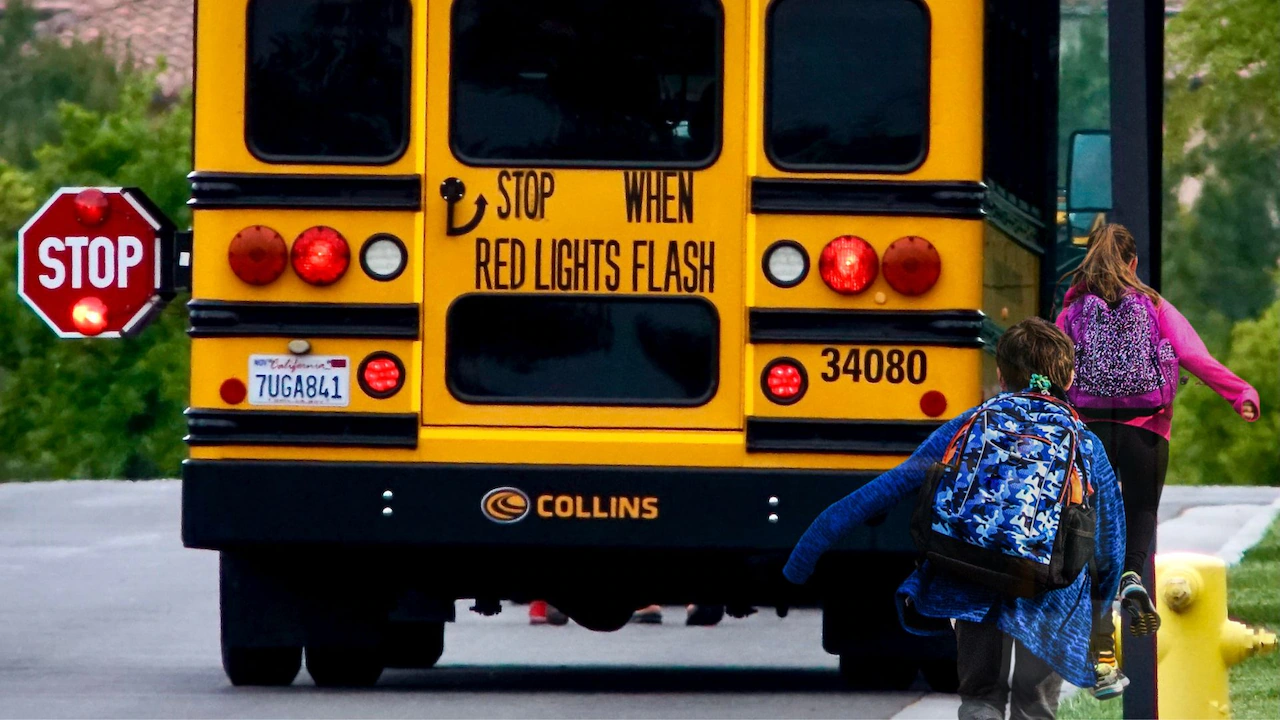Copyright forbes

Graduation mortar board cap on one hundred dollar bills concept for the cost of a college and university education Harvard University still has its tax exemption, at least for now. That’s unsurprising despite President Trump raising collegiate hackles everywhere earlier this year, first by suggesting that the school should lose one of its major tax benefits and later by proposing that many other universities implement U.S. government priorities if they want to continue receiving federal funds and tax benefits. Academia has some significant problems, and the White House aims to at least start to fix them, either via executive fiat, legislative change, or potentially self-reform. The “how” is up for negotiation. But the government holds the cards, as Trump likes to say, because U.S. universities are nearly all recipients of hefty federal welfare payments and other financial benefits that they are loath to lose. However, the Trump administration recently offered schools the chance to tell the government exactly how to apply the law to them. If Harvard wants a Socratic dialogue with the IRS, it has an open invitation to pull up a chair. The invitation was subtle. In the IRS’s 2025-2026 priority guidance plan, the first item under section 501(c)(3) is “guidance on the application of the fundamental public policy against racial discrimination, including consideration of recent caselaw, in determining the eligibility of private schools for recognition of tax-exempt status under section 501(c)(3).” The introduction to the plan explained that the agency seeks “the benefit of the insight and experience of taxpayers and practitioners who must apply the rules,” and it asked the public to provide comments and suggestions. Of course, if Treasury issues proposed regulations under section 501(c)(3), that will be another opportunity to comment, but there’s no need for Harvard and Co. to wait. The problem for Harvard and its selective compatriots in higher education is that they stand at real risk of losing their exemptions if there isn’t an obvious change in their admissions practices and extant law is applied against them. (Prior analysis: Tax Notes Federal, May 12, 2025, p. 990.) Dura lex sed lex, as the saying goes — Bob Jones University v. United States, 461 U.S. 574 (1983), gave the IRS broad power to apply extra-legislative “fundamental public policy” against nonprofit educational institutions. The agency has never relinquished that power, nor has Congress bothered to revoke or refine it. MORE FOR YOU Cambridge, MA - June 5: People walk past the Harry Elkins Widener Memorial Library on Harvard's campus on June 5, 2025. (Photo by Heather Diehl/The Boston Globe via Getty Images) Boston Globe via Getty Images Now the Trump administration has identified a fundamental public policy that it intends to pursue. In Students for Fair Admissions Inc. v. President and Fellows of Harvard College, 600 U.S. 181 (2023), the Supreme Court held that the race-based admissions programs at Harvard and the University of North Carolina violated the equal protection clause of the 14th Amendment. Recall that in Bob Jones, the Court named itself a chief arbiter of public policy: “Over the past quarter of a century, every pronouncement of this Court and myriad Acts of Congress and Executive Orders attest a firm national policy [against discrimination].” Harvard’s ‘Lop List’ Loses in Court The result in Students for Fair Admissions was hardly a surprise. In Grutter v. Bollinger, 539 U.S. 306 (2003), the majority put a 25-year clock on schools’ race-based admissions programs. By the time of Students for Fair Admissions, Harvard still had admissions percentages that, according to the majority, looked a lot like racial quotas. It also had a “lop list” of applicants at the final stage of consideration for whom only four pieces of information were considered: whether they were legacies, recruited athletes, or eligible for financial aid, and their race. The Grutter buzzer won’t go off until 2028, but as Chief Justice John G. Roberts Jr. explained for the majority in Students for Fair Admissions: “The importance of an end point was not just a matter of repetition. It was the reason the Court was willing to dispense temporarily with the Constitution’s unambiguous guarantee of equal protection.” Under current law, if an institution that accepts federal funds commits discrimination that violates the equal protection clause, it also violates the prohibition in Title VI of the Civil Rights Act of 1964 that “no person in the United States shall, on the ground of race, color, or national origin, be excluded from participation in, be denied the benefits of, or be subjected to discrimination under any program or activity receiving Federal financial assistance.” Justice Neil M. Gorsuch, in a concurrence joined by Justice Clarence Thomas, noted that the Title VI requirement is not only coextensive but clearer than the equal protection clause. “Title VI of that law contains terms as powerful as they are easy to understand,” he wrote. Gorsuch noted that Title VI applied to both Harvard and UNC, because “they elect to receive millions of dollars of federal assistance annually.” As emphasis, he added that “a recipient of federal funds may never discriminate based on race, color, or national origin — period,” and that “Title VI does not . . . ask how much a recipient of federal funds discriminates.” While the Title VI analysis likely doesn’t apply to the tax benefits that colleges receive because those benefits probably shouldn’t be considered “federal financial assistance” in that context, the practical effect is the same. The government doesn’t have to allow nonprofit institutions to violate fundamental public policy, which is expressed, among other places, in the antidiscrimination policy in Title VI. The new priority guidance plan almost certainly has Students for Fair Admissions in mind when it says “recent caselaw.” In Executive Order 14219, “Ensuring Lawful Governance and Implementing the President’s ‘Department of Government Efficiency’ Deregulatory Initiative,” issued on February 19, the White House directed agency leaders to identify unlawful and potentially unlawful regulations and make plans to repeal them. On April 9 a White House memorandum identified specific Supreme Court decisions as forming the priority for the review-and-repeal efforts. (“Memorandum for the Heads of Executive Departments and Agencies” (Apr. 9, 2025).) The list included Students for Fair Admissions. An October Surprise Harvard circa 2025 still has something in common with its original incarnation in 1636: It’s on the public dole. According to a 1643 description of the school’s founding, in 1638 John Harvard bequeathed half of his estate, “it being in all about [£]1700,” another donor ponied up £300, and “the public hand of the State added the rest.” How much the “rest” amounted to was not recorded. (New England’s First Fruits (1643).) The state in the early 1600s was apparently fine with the expenditure of public money to ensure that a young scholar could read Tully fluently in Latin and the Scriptures twice a day so as to “be ready to give such an account of his proficiency therein . . . as his Tutor shall require,” as stated in Harvard’s written rules. Those academic “Rules, and Precepts that are observed in the Colledge” of course have always had political analogues, and the Trump administration articulated its version of them in the Compact for Academic Excellence in Higher Education, which was initially sent to nine universities on October 1: Brown, Dartmouth, the Massachusetts Institute of Technology, University of Arizona, University of Pennsylvania, University of Southern California, University of Texas at Austin, University of Virginia, and Vanderbilt. The compact notes that universities in the United States benefit from an “extraordinary relationship with the U.S. government” and declares that it “represents the priorities of the U.S. government in its engagements with universities that benefit from the relationship.” If the universities don’t like the proposals, the administration has an answer for them: “Institutions of higher education are free to develop models and values other than those below, if the institution elects to [forgo] federal benefits.” The initial nine universities were asked to sign on to the compact, and the White House has indicated that other institutions are welcome to do so as well. As of October 20, none have. On October 10 MIT became the first to announce its disapproval. President Sally Kornbluth wrote that MIT “cannot support the proposed approach to addressing the issues facing higher education.” The UVA faculty senate voted 60-2 on October 3 in favor of a resolution opposing the compact. On October 17 UVA interim President Paul Mahoney struck a more conciliatory note, writing that the university agrees “with many of the principles outlined in the Compact, including a fair and unbiased admissions process, an affordable and academically rigorous education, a thriving marketplace of ideas, institutional neutrality, and equal treatment of students, faculty, and staff in all aspects of university operations.” Mahoney added that UVA seeks “no special treatment in exchange for our pursuit of those foundational goals.” The compact doesn’t mention giving additional preferential treatment for schools that sign on, however. It is addressed to schools that already receive federal benefits, including tax benefits. US President Donald Trump speaks as US Treasury Secretary Scott Bessent (L) looks on as they talk to the media aboard Air Force One as he flies to Japan on October 27, 2025. (Photo by ANDREW CABALLERO-REYNOLDS / AFP) (Photo by ANDREW CABALLERO-REYNOLDS/AFP via Getty Images) AFP via Getty Images The genesis and objective of the compact are clear. On October 12 Trump criticized “much of Higher Education” for promoting “WOKE, SOCIALIST, and ANTI-AMERICAN Ideology that serves as justification for discriminatory practices by Universities that are Unconstitutional and Unlawful,” in a post on Truth Social. Referring to the compact, Trump wrote that “Our Nation’s Great Institutions will once again prioritize Merit and Hard Work before ‘group identity,’” and then warned that “to those Universities that continue to illegally discriminate based on Race or Sex, we will continue our current efforts to swiftly and forcefully enforce Federal Law.” Beyond Students for Fair Admissions? College admissions for many selective and nearly all highly selective schools would look decidedly different under the compact, because it precludes the consideration of factors “such as sex, ethnicity, race, nationality, political views, sexual orientation, gender identity, religious associations, or proxies for any of those factors . . . in any decision related to undergraduate or graduate student admissions or financial support.” The only exception is for institutions that are “solely or primarily” single-sex or from a particular religious denomination. The breadth of the prohibitions suggests that admissions decisions would have to be made on standardized test scores, GPAs, awards, and extracurricular involvement — potentially omitting any reference to the prohibited factors. But as Harvard professor Danielle Allen noted on Harvard Kennedy School’s Ash Center for Democratic Governance and Innovation podcast, Terms of Engagement, on October 14: “Roughly 77 percent of institutions are what you would call open-admissions institutions. . . . All of the material in the compact that’s about admissions is only targeting a quarter of the actual institutions in higher education.” (Archon Fung and Stephen Richer, “Is Trump’s Higher Education Compact a Bad Deal but a Good Opportunity?” Terms of Engagement (Oct. 14, 2025).) The schools that basically admit every applicant aren’t terribly likely to balk at signing the compact if doing so means keeping their federal benefits, because they’re not going to violate it. And that poses a problem for schools like Harvard, Georgetown, and the University of California, Los Angeles. Allen doesn’t think the compact should be signed as is, but observed that it does offer a critical opening: “The best path out of the current crisis for higher ed would be a new social contract between America and its universities that was achieved via amendments to and reauthorization of the Higher Education Act and, if necessary, other pertinent statutes.” (Danielle Allen, “Why I’m Excited About the White House’s Proposal for a Higher Ed Compact,” The Renovator (Oct. 5, 2025).) She added that “we can’t get there from here without a deal made first between leading institutions of higher education and the White House.” And that deal on core principles could then become a framework for legislation. The compact has a lot to say about free speech and expression on campus, including a mandate that university signatories “impartially and vigorously enforce all rights and restrictions [they adopt] with respect to free speech and expression.” It also requires universities to quash the heckler’s veto whenever it is attempted and to acknowledge that “the freedom to debate requires conditions of civility.” That means that the institution can’t punish the expression of viewpoints or permit individual harassment for them, the compact explains. But individuals who attempt to disrupt class instruction or study locations or heckle or accost students must be given “consistent sanctions”: “Signatories shall adopt policies prohibiting incitement to violence, including calls for murder or genocide or support for entities designated by the U.S. government as terrorist organizations,” the compact says. Institutions are also required to “maintain institutional neutrality at all levels of their administration,” which means that university employees acting in their official capacity “will abstain from actions or speech relating to societal or political events except in cases in which external events have a direct impact upon the university.” The penalties proposed for violating the agreement begin at the loss of “access to the benefits of this agreement for a period of no less than 1 year,” and the return of any money advanced by the U.S. government during the year. Subsequent violations mean revocation of access for no less than two years. If a violation occurs, any private contributors to the university that year can ask for their money back. Having to return donations would be painful and could result in some institutions needing to amend their Form 990, “Return of Organization Exempt From Income Tax,” filings. But the more important “benefit” identified in the compact is “preferential treatment under the tax code.” The treatment the compact refers to is almost certainly tax-exempt status. And while it would be a most unhappy result for a university to lose its exemption for a year, it’s less harsh than the punishment the IRS can seek now under the combined weight of Bob Jones and Students for Fair Admissions, which is effectively permanent loss of exemption. Financial Responsibility Under the financial responsibility section, the compact shrewdly includes a proposal to freeze tuition rates charged to American students for the next five years. The purpose of this freeze is to enforce the duty of recipients of federal funds to reduce administrative costs “as far as reasonably possible,” according to the compact. For students pursuing hard science programs at universities with enormous endowments, the proposed deal is even more enticing: The colleges must agree not to charge them tuition at all, with the only exception being if they want to charge tuition to students from “families of substantial means.” These provisions will be hard for schools to ignore even if they try to dodge the rest of the compact’s impositions, because they’re bound to be popular with a large constituency of parents and prospective students. The Wall Street Journal offered an example of the extent of the optics problem confronting elite schools in trying to rebuff the Trump administration’s overtures in an October 16 headline: “Harvard’s Endowment Jumps to $56.9 Billion.” These schools educate a small fraction of U.S. undergraduate and graduate students, and they are consistently among the section 501(c)(3) organizations that are most flush with cash. Accordingly, protestations by top universities that they are in dire need of federal largesse fall a bit flat. In 2017 college and university endowment assets were $566.8 billion, according to a 2018 report from the Congressional Research Service. (“College and University Endowments: Overview and Tax Policy Options” (May 4, 2018).) The same report noted that 12 percent of institutions held 75 percent of all endowment assets, and the institutions with the largest endowments held more than 4 percent of total endowment assets. Those institutions were Harvard ($36 billion endowment in 2017), Yale ($27.2 billion), the University of Texas system ($26.5 billion), Stanford ($24.8 billion), and Princeton ($23.8 billion). MIT held $15 billion, or 2.6 percent of total endowment assets. Twenty-two institutions held half of the total cumulative endowment assets in 2017. The National Association of College and University Business Officers’ study showed that by 2024, the total endowment assets had jumped to $873.7 billion for 658 institutions. (“U.S. Higher Education Endowments Report 6.8 Percent 10-Year Average Annual Return, Increase Spending to a Collective $30 Billion” (Feb. 12, 2025).) Most of the demands in the compact about changes like tuition freezes, institutional neutrality, and grade integrity can’t be implemented through the tax code without legislation. And attempting to authorize the IRS to police those types of policies clearly isn’t the goal of the compact. But the tax benefits that universities currently receive don’t appear to have been tacked on to the compact as an afterthought, even though the requirements for federal financial benefits enumerated in it can’t all — or even mostly — be neatly folded into tax enforcement. The tax benefits are included because they strengthen the administration’s bargaining position overall — and the White House has this card to play because of Bob Jones. Editorial StandardsReprints & Permissions



